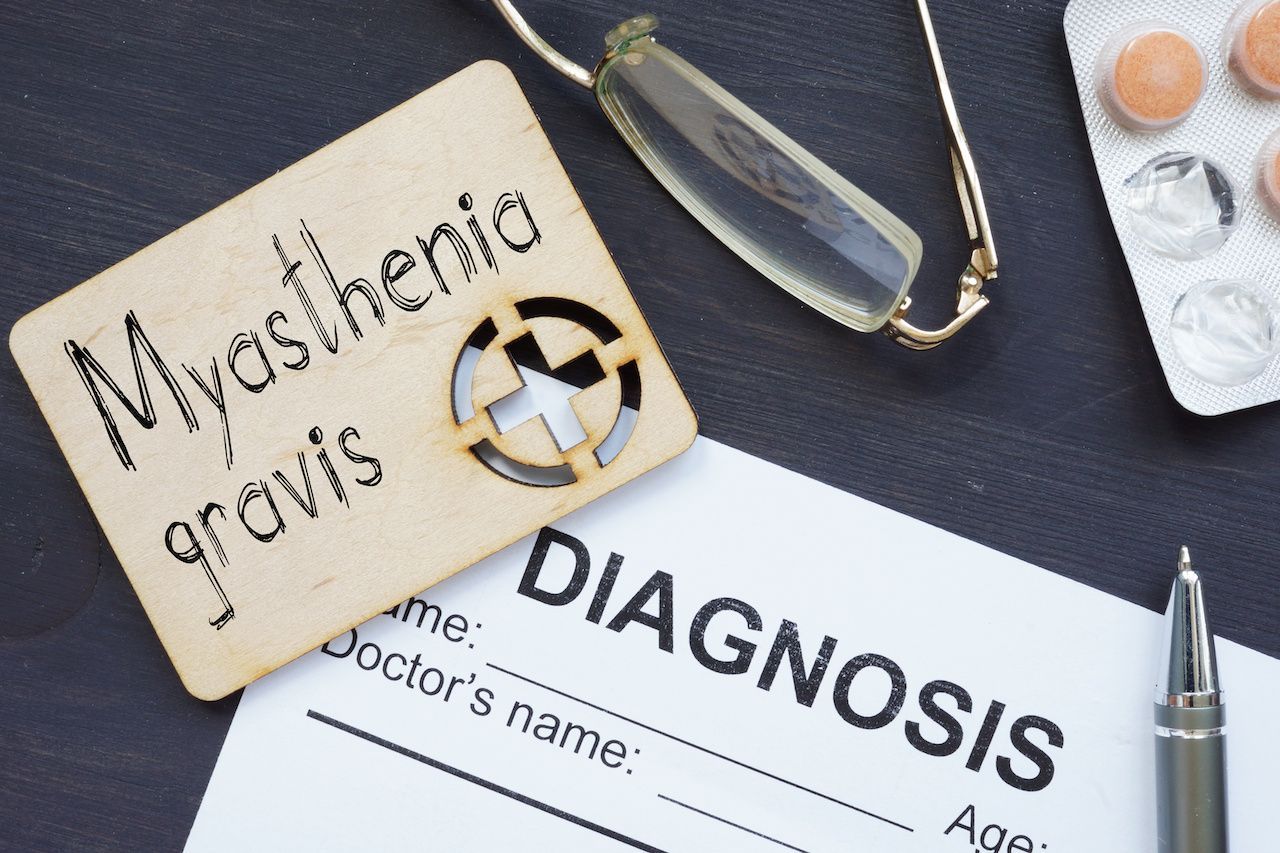- Center on Health Equity & Access
- Clinical
- Health Care Cost
- Health Care Delivery
- Insurance
- Policy
- Technology
- Value-Based Care
New MG Research Focuses on More Tailored Treatment, Bibliometric Analysis Finds
The data search of Web of Science Core Collection, spanning 2003 to 2022, identified various prospective directions in myasthenia gravis (MG) research, including in personalized treatment, subtype-based treatment, and novel immunotherapeutic strategies.
Two decades’ worth of data from a bibliometric analysis of publications on myasthenia gravis (MG) reveal recent patterns in research while signaling emerging trends to anticipate in the coming years. Findings were published in Frontiers in Neurology.
The data search of Web of Science Core Collection, spanning 2003 to 2022, identified various prospective directions in MG research, including in personalized treatment, subtype-based treatment, and novel immunotherapeutic strategies.
Myasthenia gravis | Image Credit: © Andrii - stock.adobe.com

Treatment for MG, which has grown in prevalence, likely due to factors such as improved diagnostics and aging populations, currently consists of cholinesterase inhibitors, thymectomy, immunosuppressive or immunomodulatory treatments, or plasma exchange. An interest in more effective treatments has been identified, including those that are tailored to specific subtypes of the disease.
“The keyword ‘classification’ stands out in recent research, especially during the burst period. Notably, an article published in 2015 in Lancet Neurology covering autoantibodies, epidemiology, clinical presentation, and comorbidities holds the highest burst strength (68.11) in reference citation burst detection,” the researchers wrote. “It summarizes potential treatments for MG and suggests a future research direction of exploring new immunosuppressive drugs and drug combinations tailored to MG subgroups. This article plays a crucial role in subgroup classification and provides valuable insights for future research in MG.”
In total, more than 3600 publications were identified, with the US accounting for the highest number of publications. Throughout the study period, the annual number of publications related to MG increased steadily, peaking in 2021.
Research trends showed a clear interest in different antibodies, underscoring the role of autoantibodies in the diagnosis of disease, understanding patient features, and individualizing treatment, explained the group. For example, most patients harbor antibodies targeting acetylcholine receptors (AChRs), whereas fewer have antibodies against muscle-specific kinase (MuSK) or lipoprotein-related protein 4 (LRP4).
To assess how the prevalence of MG-related keywords cited in research changed throughout the nearly 20-year period, the group performed a cluster analysis, revealing shifts in areas of interest. For example, at the start of the study period, keywords such as alpha subunit, interferon gamma, and lymphocytes held the greatest citation strength.
In more recent years, keywords with the strongest strength have evolved to neuromuscular strength, safety, and rituximab. Research interest on rituximab highlights another area of increasing interest within MG treatment—novel immunotherapeutic approaches.
“Rituximab, a keyword with high citation strength and more recent citations, is a monoclonal antibody directed against CD20 antigen on B cells that has been used for years. The clear benefit of refractory MuSK antibody-positive MG has been demonstrated; however, its efficacy in AChR-MG remains controversial,” the authors wrote. “A systematic review of 13 studies proposed that the small number of patients with AChR-MG in previous studies may have caused bias in efficacy evaluation and suggested that dosages for different subtypes of MG should be considered in future studies. In addition, due to the off-label use of rituximab and the inherent risk of infection associated with continuous B-cell depletion, safety is a crucial factor and should be the focus.”
Research on thymectomy, commonly used in MG and unavoidable in thymomatous MG, remained an area of interest in recent years of the study period. The researchers referenced to publications and extended follow-up offering conclusive benefits of thymectomy while also pointing to worsening or relapse of MG in certain patients even after the procedure, potentially a result of patient heterogeneity, autoantibody profiles, and thymic pathology, among other factors. A future area of interest may focus on how to better guide choosing conservative treatment approaches vs surgery.
Reference
Tian Y, Shen Q, Peng S, et al. Mapping current trends and hotspots in myasthenia gravis from 2003 to 2022: a bibliometric analysis. Front Neurol. 2023;14:1320344. doi:10.3389/fneur.2023.1320344
